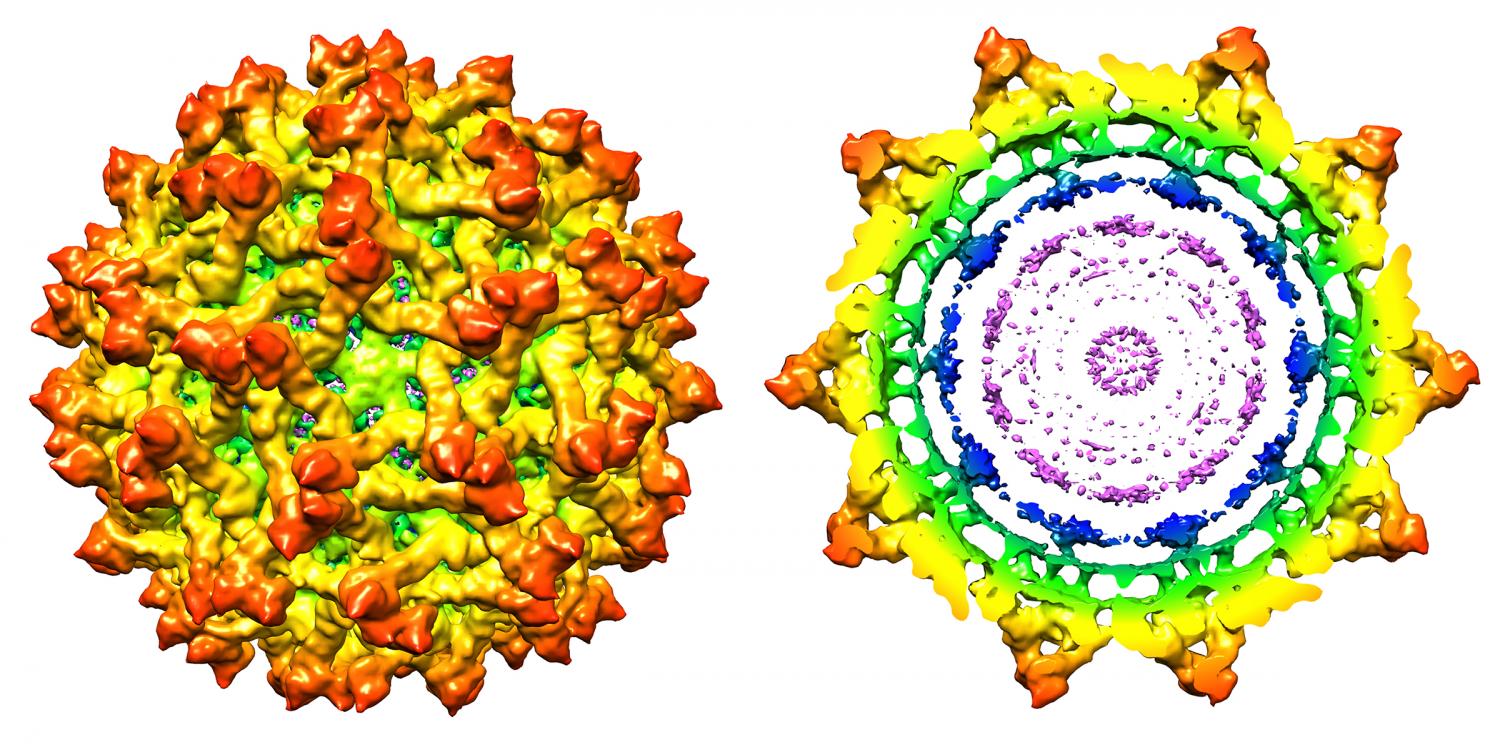Researchers at Purdue University have determined the high-resolution structure of immature Zika virus, a step toward better understanding how the virus infects host cells and spreads.
Zika belongs to a family of viruses called flaviviruses, which includes dengue, West Nile, yellow fever, Japanese encephalitis and tick-borne encephalitic viruses. Although only the mature forms of flaviviruses are considered infectious, the virus population secreted from host cells is a mixture of mature, partially mature and immature virus particles.
"It is, therefore, probable that the immature form of Zika also plays a role in virus infection and spread," said Michael Rossmann, Purdue's Hanley Distinguished Professor of Biological Sciences.
The research team was led by Rossmann, with Richard Kuhn, both professors in Purdue's Department of Biological Sciences, as well as postdoctoral research associate Vidya Mangala Prasad.
Findings are detailed in a research paper appearing online Monday (Jan. 9) in the journal Nature Structural & Molecular Biology and it will be published in a future print issue of the journal.
Zika belongs to a family of viruses called flaviviruses, which includes dengue, West Nile, yellow fever, Japanese encephalitis and tick-borne encephalitic viruses. Although only the mature forms of flaviviruses are considered infectious, the virus population secreted from host cells is a mixture of mature, partially mature and immature virus particles.
"It is, therefore, probable that the immature form of Zika also plays a role in virus infection and spread," said Michael Rossmann, Purdue's Hanley Distinguished Professor of Biological Sciences.
The research team was led by Rossmann, with Richard Kuhn, both professors in Purdue's Department of Biological Sciences, as well as postdoctoral research associate Vidya Mangala Prasad.
Findings are detailed in a research paper appearing online Monday (Jan. 9) in the journal Nature Structural & Molecular Biology and it will be published in a future print issue of the journal.

Comment